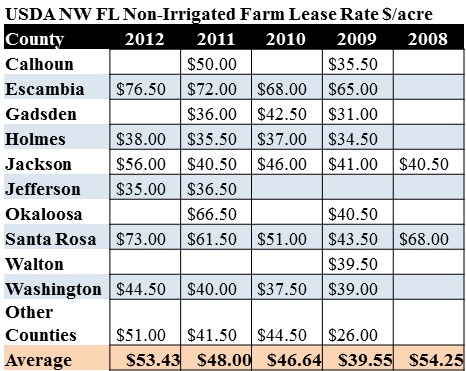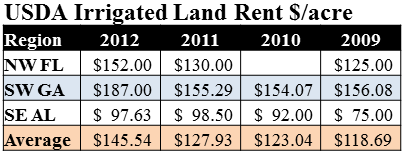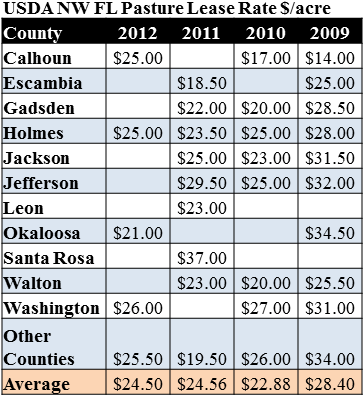
One of the challenges for both land owners and farmers is making farm land rental agreements which are fair for both parties. Farm leases are private agreements between farmers and land owners, so very little information is available to assist with determining fair market value. Every lease is also different: some include hunting rights, some do not; and some leases are for an entire farm which includes land that is not suitable for crops or grazing, while others target only the acres being used for production. Certainly larger tracts have more value to farmers than smaller tracts. Location, soil type and amount of available irrigation also affect the value of a potential farm lease.
The challenge is finding a starting place for negations. The USDA National Agriculture Statistic Service (NASS) does an annual survey of farm lease rates each summer. Table 1 above provides the average rental rate per acre of dryland or non-irrigated crop land reported by county for the past few years. Since there are much fewer irrigated farms, NASS reports irrigated acres only for the region instead of individual counties in Florida. Table 2 below shows the average lease rate per acre for irrigated farm leases in the Tri-state area by region. Pasture rental rates are usually lower per acre than crop land. Table 3 below shows the results of the NASS survey of pasture land rental by county.
USDA NASS has other data available, if you would like to compare other economic figures and statistics, go to http://quickstats.nass.usda.gov.


 0
0
